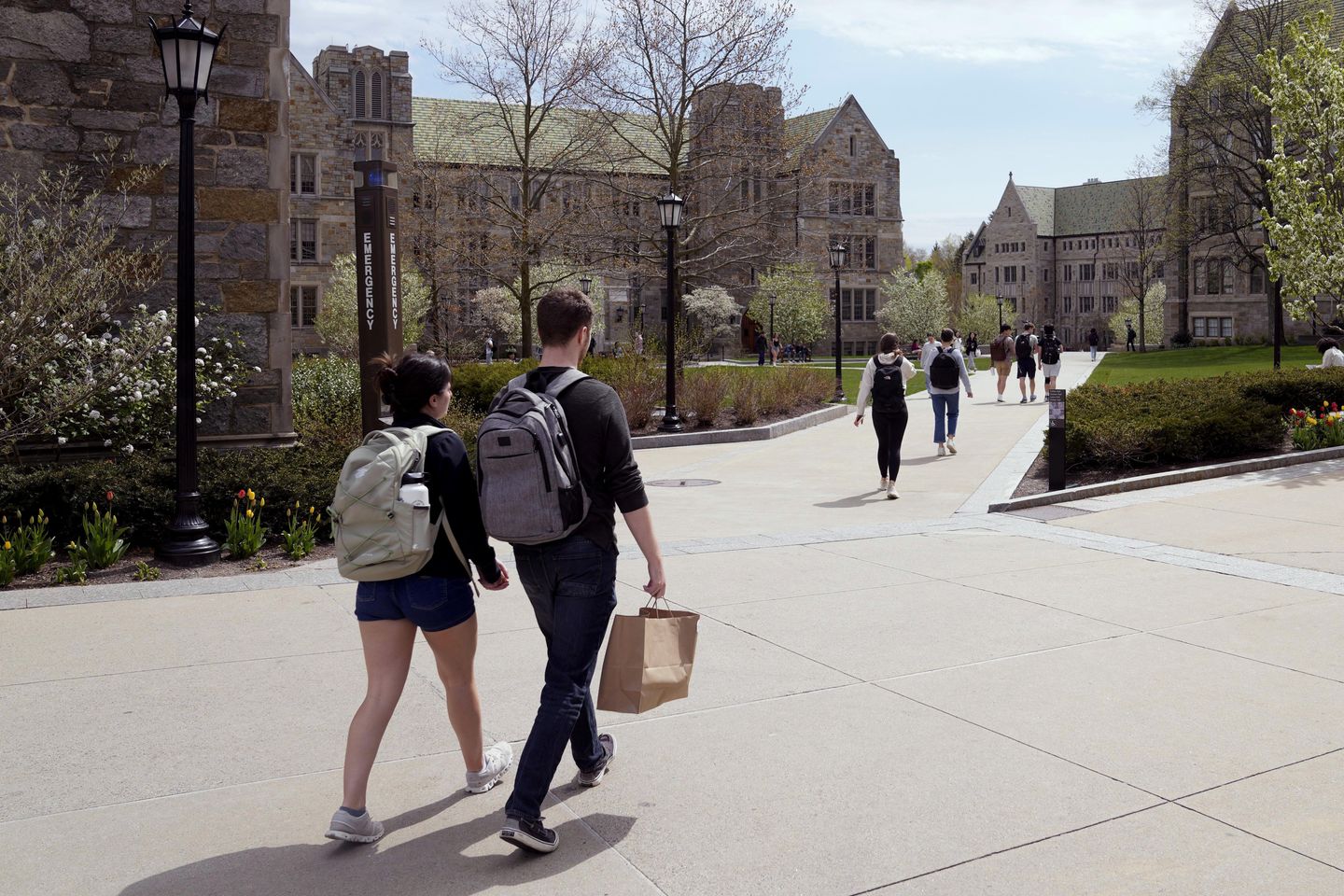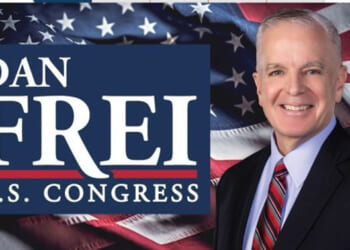
Public colleges in 2023-24 experienced their sharpest annual decline in tuition revenue for the second consecutive year.
Net tuition and fee revenue per full-time equivalent student in fiscal 2024 was $7,510, the State Higher Education Executive Officers Association said Wednesday in an annual report. Adjusted for inflation, that’s down 3.7% from 2023 and 8.1% since 2019.
Tuition revenue remained much higher than the $2,629 per student that SHEEO recorded in 1980, the first year of available data. The organization of state officials overseeing public colleges said the key factor in last year’s decline was a 4.8% spike in state governments’ financial aid subsidies to an all-time high of $1,155 per full-time student.
“The decline in net tuition and fee revenue, despite enrollment increases, was largely due to a combination of low growth in tuition rates and increases in state financial aid,” Jessica Duren, a SHEEO spokeswoman, told The Washington Times. “States, systems and individual institutions have also shown concern over college affordability, and some have, in recent years, implemented tuition freezes or limits.”
The surge in state spending on public education followed inflation-adjusted increases of 4% in 2020, 5% in 2021, 5.2% in 2022 and 1.7% in 2023.
“These all include federal stimulus funding that states directed to higher education,” Ms. Duren said.
The report noted that state and local governments spent $139.1 billion on public colleges in fiscal 2024, including $624.1 million of federal stimulus funding. Inflation-adjusted federal stimulus funding for higher education was down 63.3% from $1.7 billion in fiscal 2023.
Full-time enrollment grew by 2.9% to 10.4 million students at state campuses last year, reversing 12 straight years of decline. Nevertheless, it was still down 10.8% from a historic peak in 2011.
These numbers come as the Trump administration and Republican-led states have moved to reduce funding for higher education.
Robert E. Anderson, SHEEO’s president, said future government spending hikes to cover recent enrollment increases may not be forthcoming as pandemic stimulus dries up.
“With uncertainty on the horizon for federal and state budgets alike, we know states will be under greater pressure to fund higher education,” Mr. Anderson said. “While each state is facing its own unique circumstances, we hope lawmakers will continue to view public higher education as an investment in their state’s future workforce.”
The report found that public college tuition revenue declined in 2023-24 for the fourth straight year. Before last year, SHEEO said it fell just six times: 2000 (2.7%), 2001 (0.9%), 2019 (3.2%), 2021 (2.5%), 2022 (0.9%) and 2023 (3.3%).
According to CollegeBoard, which does not adjust its numbers for inflation, the average tuition for in-state students at a four-year public university rose by 2.7% from $11,310 in the 2023-24 school year to $11,610 in 2024-25. For out-of-state students, it grew by 3.2% from $29,840 to $30,780 over the same period.
By comparison, the average private college charged $43,350 per year for tuition in 2024-25, up 3.9% from last year.
SHEEO found that state tax appropriations for public universities grew 0.8% beyond inflation last year to $11,683 per student, surpassing pre-pandemic spending in 2019 by 17.9%.
Spending per student ranged from $4,629 in New Hampshire to $25,529 in Illinois.
Nationwide, state education allocations per student with federal COVID-19 relief funds included were 9% or $969 higher per student last year than in 2008, when a recession led states to trim their education budgets.
In its 2020 report, SHEEO inaccurately predicted pandemic lockdowns would force states to cut higher education spending to an extent not seen since 2008.
Far from making cuts, state tax appropriations increased nationally in 2023-24 for the 12th straight year.
Education funding increased in 25 states, ranging from a bump of 0.5% or $51 more per full-time student in South Dakota to 23.1% or $2,101 more in Nevada.
Spending declined in 25 other states, ranging from 21.1% or $3,175 less per student in Alabama to 0.2% or $20 less in Wisconsin.
According to SHEEO, federal stimulus money has played a role in allocations the past few years, as some states received more funding than others.
Peter Wood, president of the conservative National Association of Scholars, said it’s unlikely that lawmakers will keep supporting increased funding for state campuses at a time when birth rates are falling and fewer students are considering college.
He described last year’s enrollment increase as a “blip” driven by a slight post-pandemic rebound in student enrollment.
“The American public is losing its reflexive support for colleges and universities,” said Mr. Wood, a former associate provost at private Boston University who was not involved in the report. “You’re asking them to continually increase subsidies at a time when these institutions are serving fewer people and faith in their value is in steep decline.”












